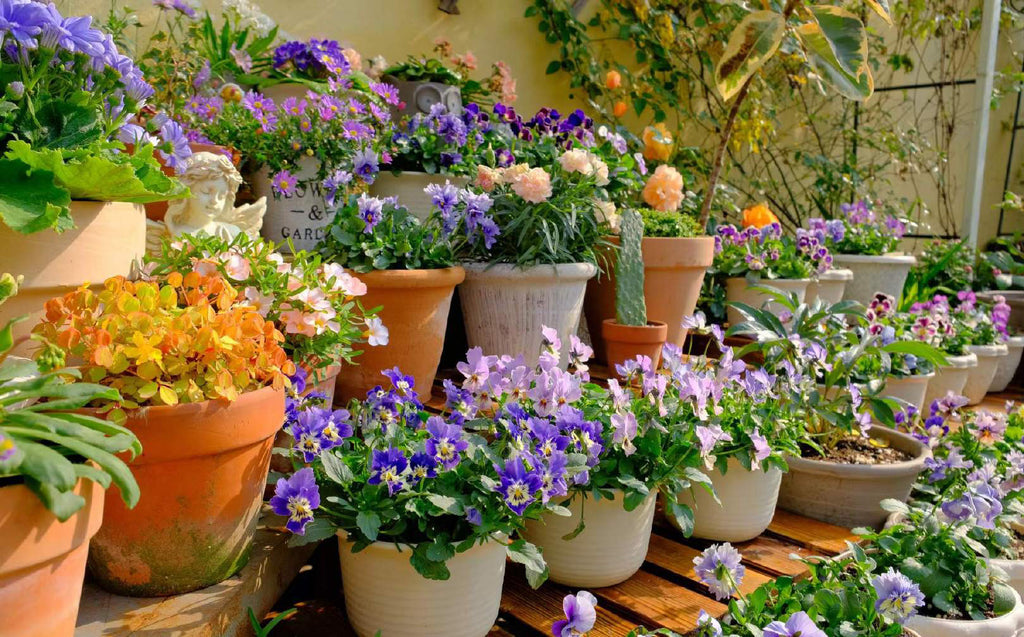By Michael Jenkins

Gardening is a seasonal activity, and the weather informs nearly every aspect of our gardens and our gardening practices. For good or ill, weather can be temperamental, and at this time of the year many gardeners are having to cope with inclement, stormy weather. Thunderstorms, high winds, and even hurricanes can damage our gardens and plants. While there’s no way to prevent 100% of the issues that storms, hurricanes, hail, and high winds can cause, there are some steps we can take to protect and prepare our gardens for inclement weather.
The first step is to understand the weather that occurs where you live, and what sorts of problems are likely to happen. Across much of North American right now, thunderstorms are a regular occurrence. The good news is that if you know how to prepare your garden for a thunderstorm, you’ll be ready for many common forms of inclement weather. Here are some steps you can take if thunder, lightening, heavy rains and high winds or hail may be headed your way:
- Bring containers inside, or at least shelter them from the worst of the wind and rain. Containers are especially vulnerable to bad weather—they can fall over, get waterlogged, or sustain wind damage more easily than plants in-ground. This goes double for hanging containers of any kind—those should absolutely ride out the storm inside!
- Clear debris and secure outdoor furniture, fixtures, and trellises by moving them out of the wind, giving them some shelter, or tying them down securely. Use nylon rope, not garden string or twine, or tie-downs. Reinforcing your trellises with ropes and stakes in the ground can help a good deal, as waterlogged plants and high winds can cause them to fall over.
- Check your drainageby making sure that garden drains and gutters are clear long before the storm. This will help move water away from your house or garden and into the storm drains where it can be safely disposed of.
- Stop watering for a day or so before the storm, as water-soaked soil is less absorbent and more likely to flood, puddle, or wash away than drier soil. However, remember that overly-dry soil is a problem: it compacts and sheds water, leading to pooling or flooding.
- Provide shelter for smaller plants or seedlings in the form of sturdy row covers, or staked pots/containers in order to give them some shelter from wind, rain, or worse. This gives them a better chance of making it through the weather unscathed and continuing to thrive in the aftermath of the storm.
While these tips should help with most storms or other forms of bad weather, conditions that are likely to lead to high winds—such as hurricanes and other windstorms—have their own special considerations. Here are a few additional ideas for dealing for preparing for them:
- Hurricanes can bring very high winds, which can cause serious damage to home and garden.If you live where hurricanes or other high-wind storms are a possibility, keep an eye on the weather. It’s best to prepare in advance, for example by having trees, hedges, and the like trimmed well before severe weather is expected. All debris should be cleared away well before the storm; tree limbs can become projectiles in high winds.
- Turn off any irrigation systems like sprinklers, drip hoses, and the like before the storm comes through. If possible, shut off their water supply fully. The reason for this is that if a tree falls and damages a water hose or pipe, it can create additional flooding and damage.
- Delicate plants and containers should be brought inside, or at least tucked into a sheltered corner. High winds can damage plants severely, and by sheltering them you’ll help keep them safe.
- Trellised, stakes, and other supports should be laid down on the ground in order to keep them from suffering the worst wind damage. In high winds, upright trellises and staked plants can becomes sails and blow away! It’s generally OK to pull up the trellis or stake and lay it down with the plant attached as long as you do so gently with no damage to the stem or vine.
- Pick all fruit that is close to being ripe! It generally won’t survive the wind and rain of a hurricane or other severe weather event and will be safer inside.
- Bring in or strongly anchor all outdoor furniture and décor. Even a garden gnome can take flight in high winds and become a dangerous projectile, so bring it all inside or at least tie it down securely.
This leaves us with one question: what to do if the worst happens and your garden suffers damage in a storm. The only real answer is to carry on as best you can: clear up the debris, save the plants that you can safe, and accept the fact that gardening is fundamentally an interaction between us and the natural world, and we’re not always in control. Life and death are part of the cycle of the garden, and storm damage is just another manifestation of that cycle.

We hope these tips help keep you and your garden as safe as possible during inclement weather. If you have any tips, tricks, or storm stories to share, please post them in the comments or connect with us on social media. At Gardzen we’re all about community and we love hearing from you!

Leave a comment